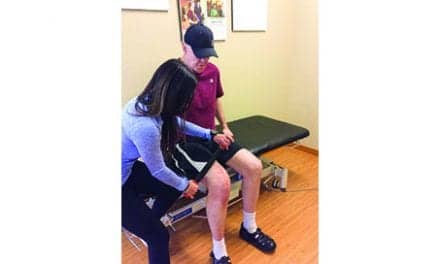According to an article in WebMD, falls are a frequent complication of Parkinson’s disease, and preventing falls is very important. While there are many things that can be done to reduce the risk of falls, the two most important things are to work with the patient’s physician to insure treatments are optimal and to consult with a physical therapist, who can assess walking and balance. The physical therapist is the expert when it comes to recommending assistive devices or exercises to improve safety.
Below find tips for patients on preventing falls and maintaining balance.
How to Prevent Falls With Common Household Hazards
* Floors. Remove all loose wires, cords, and throw rugs. Minimize clutter. Make sure rugs are anchored and smooth. Keep furniture in its accustomed place.
* Bathroom. Install grab bars and nonskid tape in the tub or shower. Use nonskid bath mats on the floor or install wall-to-wall carpeting.
* Lighting. Make sure halls, stairways, and entrances are well lit. Install a night light in your bathroom or hallway. Make sure there is a light switch at the top and bottom of the staircase. Turn lights on if you get up in the middle of the night. Make sure lamps or light switches are within reach of the bed if you have to get up during the night.
* Kitchen. Install nonskid rubber mats near sink and stove. Clean up spills immediately.
* Stairs. Make sure treads, rails, and rugs are secure. Install a rail on both sides of the stairs. If stairs are a threat, it may be helpful to arrange most of your activities on the lower level to reduce the number of times stairs must be climbed.
* Entrances and doorways. Install metal handles on the walls adjacent to doorknobs of all doors to make it more secure as you travel through the doorway.
Tips for Maintaining Balance
* Keep at least one hand free at all times; try using a backpack or fannypack to hold things rather than carrying them in your hands. Never carry objects in both hands when walking as this interferes with keeping your balance.
* Attempt to swing both arms from front to back while walking. This may require a conscious effort if Parkinson’s disease has diminished your movement, however, it will help you to maintain balance, posture, and reduce fatigue.
* Consciously lift your feet off of the ground when walking. Shuffling and dragging of the feet may cause you to lose your balance.
* When trying to navigate turns, use a "U" technique of facing forward and making a wide turn, rather than pivoting sharply.
* Try to stand with your feet shoulder length apart. When your feet are close together for any length of time, you increase your risk of losing your balance and falling.
* Do one thing at a time. Don’t try to walk and accomplish another task, such as reading or looking around. The decrease in your automatic reflexes complicates motor function, so the less distraction, the better.
* Do not wear rubber or gripping soled shoes, they may "catch" on the floor and cause tripping.
* Move slowly when changing positions. Use deliberate, concentrated movements and if needed, use a grab bar or walking aid. Count 15 seconds between each movement. For example, when rising from a seated position, wait 15 seconds after standing to begin walking.
* If you become "frozen," visualize stepping over an imaginary object, or have someone place their foot in front of yours to step over. Try not to have a caregiver or companion "pull" you, this may throw you off balance and even prolong the episode.
* If balance is a continuous problem, you may want to consider a walking aid such as a cane, walking stick, or walker. Once you’ve mastered walking with help, you may be ready to try it on your own again.
[Source: WebMD]




